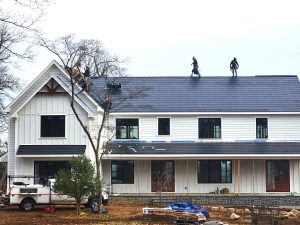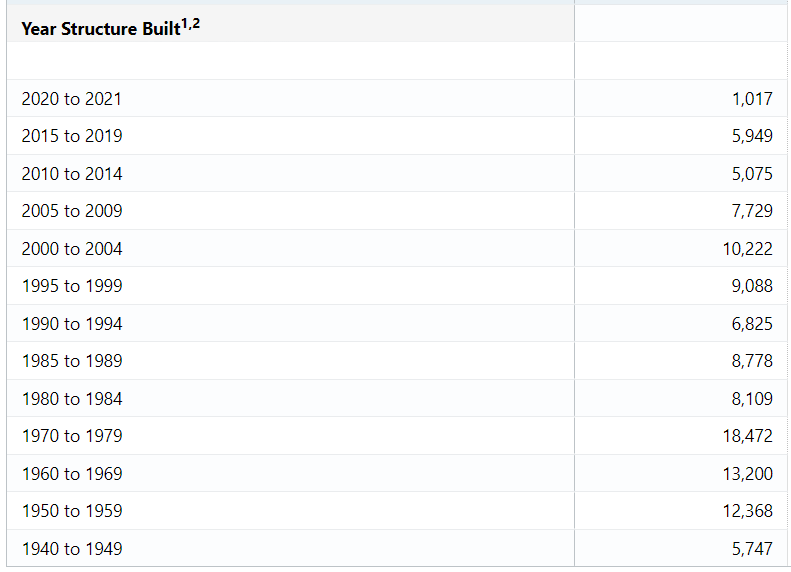
June is American Housing Month, a time to reflect on the importance of having a safe and secure place to call home. For many people, homeownership is the cornerstone of the American Dream, but for others, finding and maintaining adequate housing can be a struggle.
During American Housing Month, organizations and government agencies across the country may hold events, workshops, and outreach programs to educate the public on housing-related issues. These may include topics such as homeownership, affordable housing programs, energy-efficient housing, fair housing laws, and more.
The month also serves as an opportunity to celebrate the progress made in addressing housing challenges and to highlight the work of individuals and organizations who are making a positive impact in the housing sector.
Each year, the American Housing Survey (AHS) is sponsored is sponsored by the Department of Housing and Urban Development (HUD) and conducted by the U.S. Census Bureau. The survey is the most comprehensive national housing survey in the United States.
The 2021 National General Housing Data for All Occupied Units is as follows (these are in units of 1,000):




Generate more comprehensive data here.
Housing is a fundamental need that affects people’s lives in numerous ways. Safe and affordable housing is essential for promoting health, education, and economic prosperity. Unfortunately, millions of Americans face housing challenges, including homelessness, inadequate living conditions, and unaffordable rents. According to the National Low Income Housing Coalition, over 7 million extremely low-income households in the US spend more than half of their income on housing, leaving little for other basic needs like food, healthcare, and transportation.
The housing industry plays a crucial role in providing homes for people and contributes significantly to the economy. According to the National Association of Home Builders, the housing sector accounts for approximately 15% of the country’s Gross Domestic Product (GDP), creating jobs, generating revenue, and supporting local businesses. In addition, the housing industry has a multiplier effect, meaning that for every dollar spent on housing construction or renovation, there is an increase in economic activity that creates additional jobs and income.
However, the housing industry faces numerous challenges that limit its ability to meet the growing demand for safe, affordable, and sustainable homes. One of the primary challenges is the shortage of affordable housing, particularly for low-income households. According to data from the National Low Income Housing Coalition, there is a shortage of over 7 million affordable and available rental homes for extremely low-income households. The shortage is even more severe in metropolitan areas, where demand for affordable housing is highest.
Another challenge facing the housing industry is the aging housing stock. Many homes in the US were built decades ago and are in need of repairs or renovations. The lack of maintenance and upgrades can lead to deteriorating conditions, resulting in health and safety hazards. The cost of repairs and upgrades can be a significant burden for homeowners, particularly for low-income households who may not have the financial resources to invest in their homes.
Climate change is also a critical challenge facing the housing industry. Extreme weather events such as hurricanes, floods, and wildfires can cause significant damage to homes and disrupt communities. Climate change can also impact the affordability of housing, particularly in areas prone to natural disasters. Rising sea levels and flooding can increase the cost of homeownership and make it difficult for low-income households to afford insurance or find housing in safer areas.
Solutions to the Housing Crisis
To address these challenges, the housing industry needs to adopt a comprehensive approach that promotes safe, affordable, and sustainable housing for all Americans. This includes investing in new housing construction, renovating existing homes, and promoting energy-efficient and sustainable building practices.
One solution is to increase funding for affordable housing programs. This would provide low-income families with more options when it comes to housing and ensure that everyone has access to safe and healthy housing.
Another solution is to increase the availability of affordable housing. This can be done by incentivizing developers to build affordable housing units and implementing policies that require a certain percentage of new housing developments to be affordable.
Finally, it’s essential to address the issue of substandard housing. This can be done by implementing regulations that require landlords to maintain safe and healthy living conditions for their tenants. Additionally, it’s important to provide resources for low-income families to make necessary repairs to their homes to ensure that they are safe and healthy.
Conclusion
American Housing Month is a critical event that highlights the importance of safe and affordable housing for all Americans. The lack of affordable and safe housing is a significant problem in the United States, and it’s essential to address these issues to ensure that everyone has access to quality housing. By raising awareness about these challenges and advocating for policies that support affordable and safe housing, we can work towards a future where everyone has access to quality housing.


